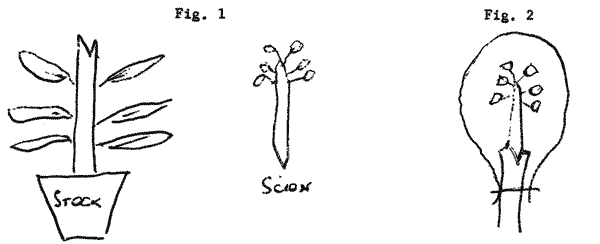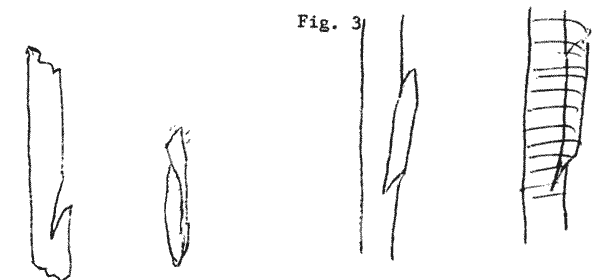
SAPODILLA CLONAL PROPAGATION
SCIENTIFIC NAME: Achras sapote, Manilkara zapota
FAMILY: Sapotaceae
METHODS
Air layer Cuttings
Approach Grafting Wedge Graft
Side Veneer Graft.
SEASON
Year round if favourable growth in rootstocks, but preferably October to April.
AIRLAYER
Air layering for sapodilla takes more time on the tree to develop roots than most other fruits. There may also be differences in success rates with different varieties. Choose branches on parent trees and cincture (remove a ring of bark) to a width of 40 to 50 mm at 600 to 900 mm from the tip. Addition of IBA and NAA at 10,000 p.p.m. a/c may assist in speeding up rooting. Wait till latex is partly congealed on cincture and then wipe off and apply the IBA/NAA as talc or soaked in the peat ball. Wrap the cincture with peat and cover with clear polythene in the normal way.
It may be 3 to 5 months before roots are visible through the polythene. When root development adequate, detach the branch in stages over two weeks.
Pot up and put in humid shaded environment, and preferably cover foliage with a large polythene bag. Remove the bag after 2 weeks.
CUTTINGS
Not particularly satisfactory due to slow root development and more research is required. Apply rooting hormone and insert in mist bed with bottom heat in range of 25 to 30°C.
APPROACH GRAFTING
Can be done either on benches adjacent to parent tree, or on the ground if low branches available, or on potted trees. Preferably match a stock with a scion branch of slightly smaller diameter at the point of contact.
Cut thinly in both stock and scion (no more than 1/3rd of the diameter) for a length of 50 to 70 mm. Match and tie in the normal way. If growth of stock and scion satisfactory, cincture the scion below the union at 30 to 35 days. At 45 to 50 days remove the top of the stock. At 60 to 65 days cut scion in area formerly cinctured. It will pay to wait longer if at 60 to 65 days the scion is in an active growth flush.
Remove grafted tree to shade, keep in high humidity and preferably place a polythene bag over the foliage.
WEDGE GRAFT
Select stock seedlings from 9 to 18 months old with at least 10 pairs of leaves. Scion wood should be semi- to fully-mature terminal shoots (not in an active growth flush). Best results come from terminal scions which have been cinctured on the parent tree for at least 30 days. Scions should be cut to approximately 75 to 85 mm long, with all leaves removed except for bottom halves of the top rosette of 6 to 8 leaves. The stock is topped leaving intact at least 4 pairs of leaves below the graft. Wedge graft as per Fig. 1 with the stock cut set obliquely and the scion cut less on one side than the other. The long cut scion surface faces the thicker side of the stock.

Bind the union with tape and then cover the scion with a polythene bag (Fig. 2). The bag should be retained until the scion commences new growth.
SIDE VENEER GRAFT
Stocks should be 9 to 18 months old, 200 to 400 mm high and with at least 10 pairs of leaves. Scions should be mature terminals, preferably cinctured 30 days previously. Sections of non-terminal wood can also be used if the scion branch has been cinctured.

The scion is cut to a length of 60 to 90 mm. A thin veneer of wood some 40 to 50 mm long is cut on the stock - to a thickness no more than 1/3rd the diameter of the stock (Fig. 3). At the bottom, this cut section is stepped back so as to hold the scion. The scion stick is entirely defoliated and a veneer of identical length to that on the stock cut from the lower half of one side.
The surfaces are matched and the scion is bound to the stock with tape. The scion should be completely covered with tape.
After 30 to 40 days the tape is removed from the top half of the scion. If the scion is viable then the stock is cut back to just above the scion. The remainder of the tape is removed after the scion has started to grow away.
All rootstock growths must subsequently be removed at regular intervals.
NOTE: Particular attention should be taken to ensure that the grafting knife is kept clean and free of latex at all times.
DATE: March 1981
* * * * * * * * * * * * *
